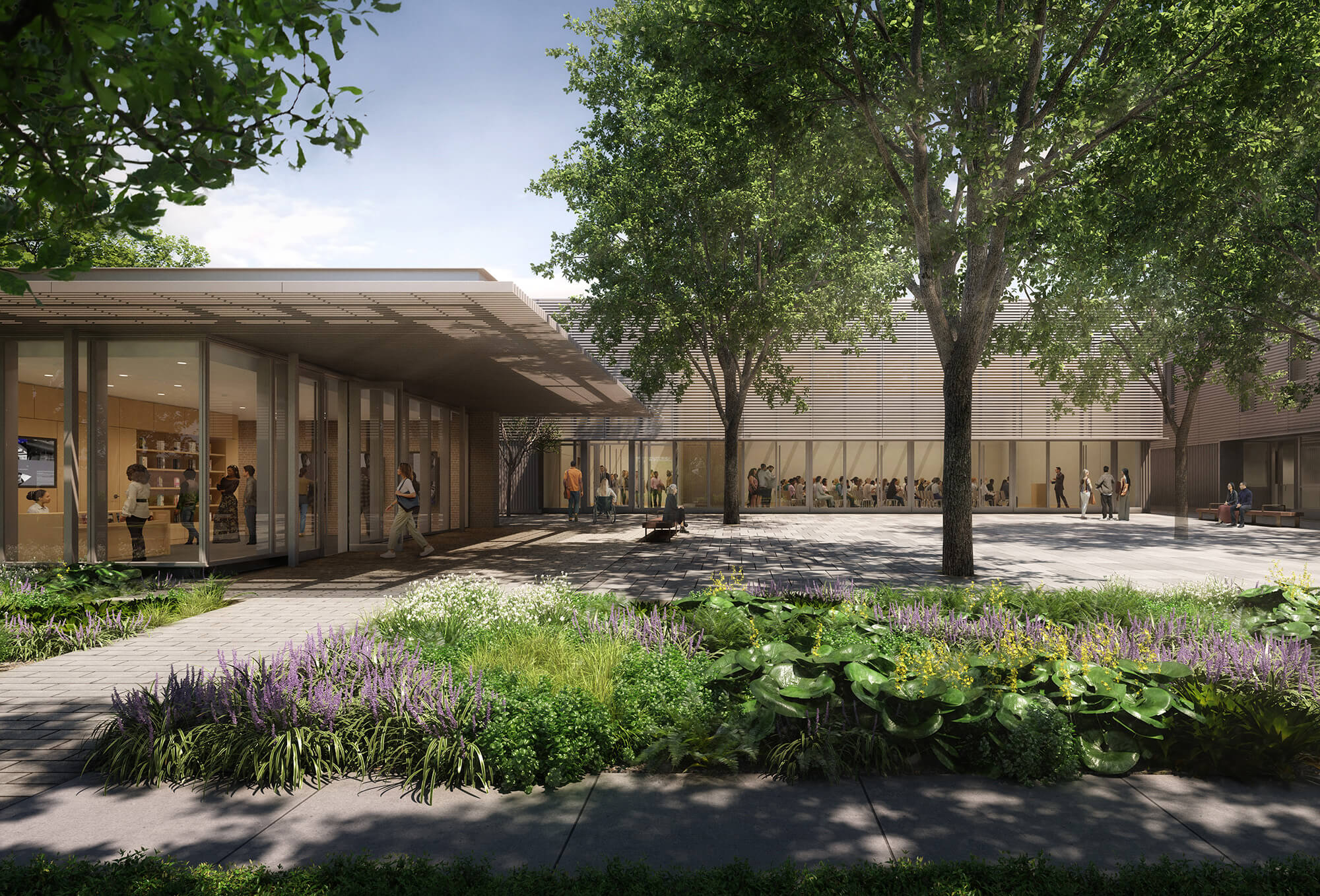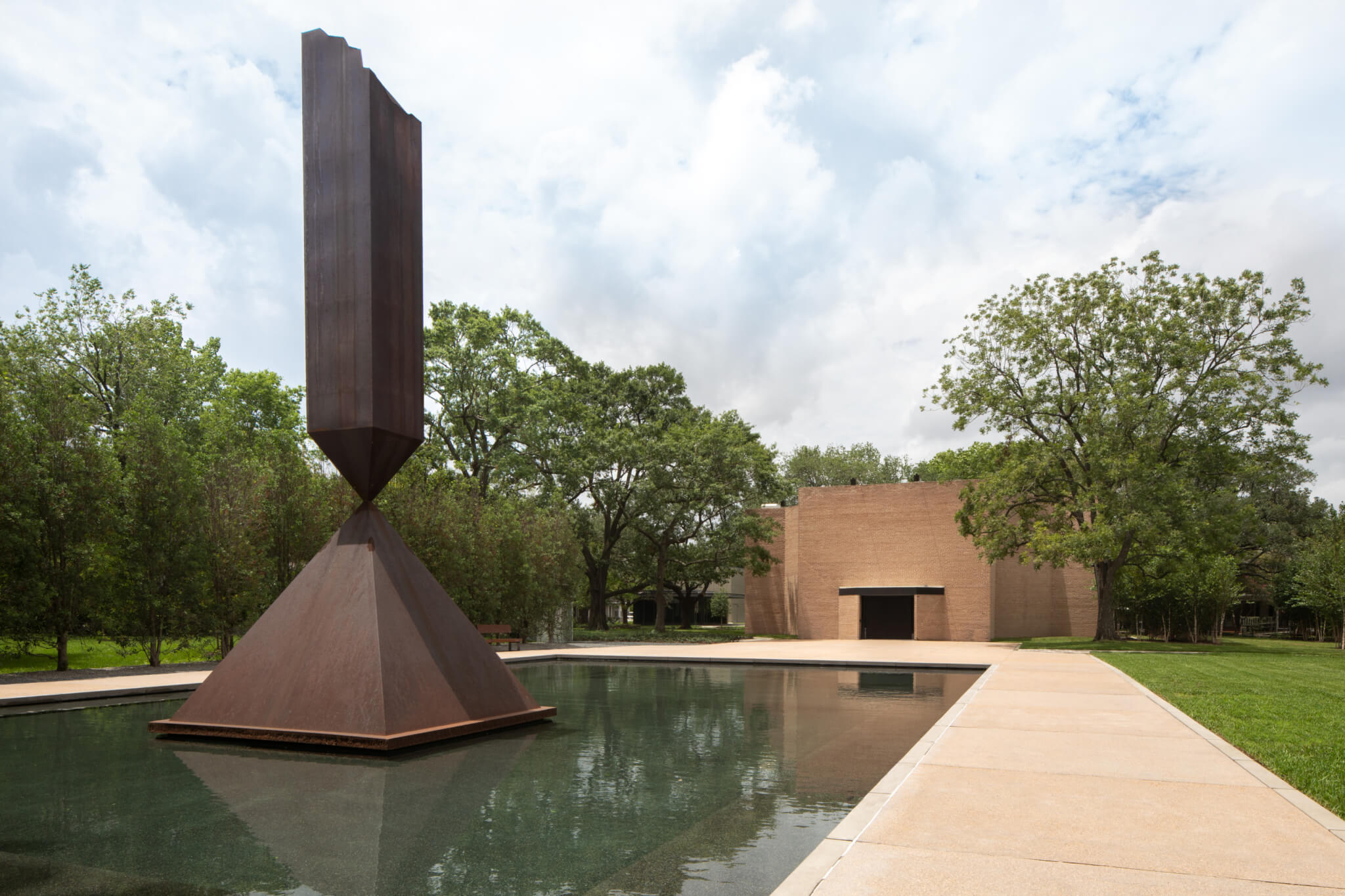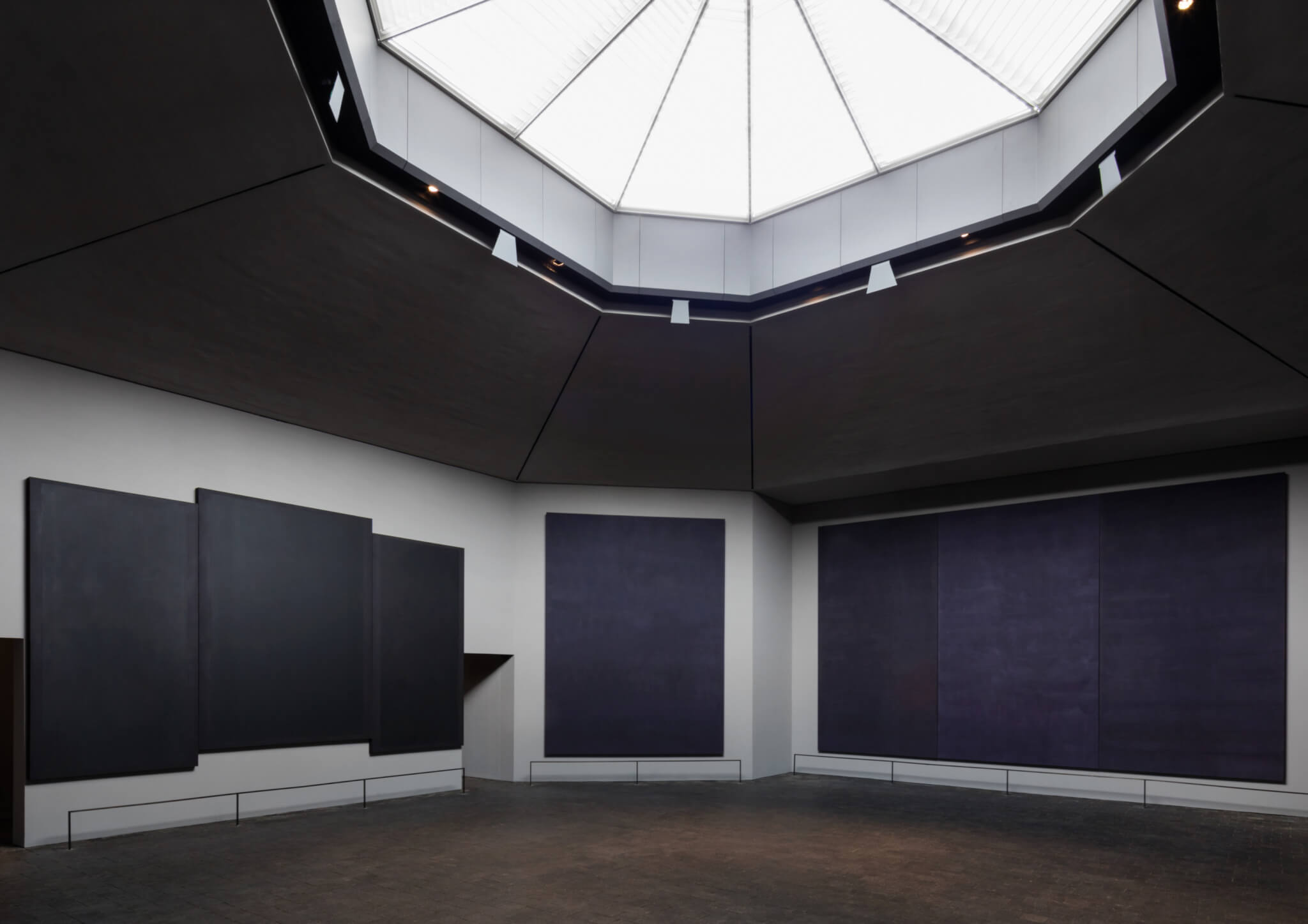Rothko lovers: Take note. Shovels broke ground in Houston this week on phase two of the Opening Spaces campus plan, a $42-million, multi-year restoration and expansion of the world famous Rothko Chapel.
The renovation is led by New York–based Architecture Research Office (ARO), together Nelson Byrd Woltz Landscape Architects (NBW) and the construction company Linbeck Group. ARO designed the campus plan, and NBW is the landscape architect. Studio Boma is also on the project team.
The campus plan was first announced in 2016. Phase one began in 2019 and finished in 2021. For phase two, ARO and NBW were tasked with adding flexible, multi-use indoor and outdoor spaces for programming, gathering, and reflection to the Chapel’s North Campus, which is surrounded by a genteel, low-rise 20th century residential neighborhood. The new architecture, ARO said, takes cues from the nearby bungalows built in the 1920s, namely the new architecture’s gray wood siding and horizontal profile.

This effort is meant to support Rothko Chapel’s dual mission as a space for contemplation, action, and to serve as a conduit for community engagement, officials said. Thus, ARO’s campus plan will create new buildings that support the Rothko Chapel’s mission at the intersection of art, spirituality, and human rights. New renderings from the design depict what these efforts will look like.
“The Chapel has never had the room that we need to fulfill our dual mission,” said David Leslie, the Rothko Chapel’s executive director. “The Opening Spaces project is not only about creating spaces that enable us to welcome more visitors, but also facilitating more enriching experiences of the art, deeper contemplation, and the social justice-focused community engagement embedded in our founders’ vision, which brings people together in dialogue and reflection across the many boundaries that separate us.”
The iconic building was designed by Mark Rothko himself, together with art collectors John and Dominique de Menil and myriad big name architects. Originally, Philip Johnson drew up plans for the building, but Rothko and Johnson clashed and eventually disbanded. Afterward, Rothko worked with Howard Barnstone, Barnett Newman, and later Eugene Aubry on the project.

Mark Rothko died in 1970, so he didn’t see the building’s completion in 1971. The building is defined by its 14 monumental Rothko panels centered by seating space which invites spiritual reflection. In 2001, the Rothko Chapel was listed on the National Register of Historic Places.
The Rothko Chapel annually has more than 100,000 visitors from over 100 countries. In lieu of the Rothko Chapel’s 50th anniversary, in 2016, museum officials announced an expansion plan that would help the institution absorb the expanding volume. ARO was brought on to design the upgraded campus shortly after.

Phase one of the project commenced in 2019, and wrapped up in 2021. The first phase entailed the complete restoration of the Rothko Chapel building: It delivered a new skylight, lighting and A/V systems, structural reinforcements, and modifications to egress points. “It wasn’t a restoration,” said ARO partner Stephen Cassell when it completed. “It was about strengthening the original intent of the experience.”
Phase one also brought major landscape and infrastructure improvements, including the new Suzanne Deal Booth Welcome House, and a new campus visitor hub.
Phase two, which officially broke ground this week, is split up into two sub-phases: Phase 2A and 2B. Phase 2A will deliver a new Administrative and Archives Building, and the Kathleen and Chuck Mullenweg Meditation Garden. Phase 2B will provide a new Program Center, a guest bungalow for Chapel speakers and fellows, and a tree-shaded plaza—all of these facets will be sited on the Chapel’s North Campus.

Today, the North Campus is connected to the Rothko Chapel across Sul Ross Street. Upon phase two’s completion in 2026, the campus will have more capacity for public programming, officials said. This feature, curators continued, is vital to the de Menils’ vision of situating the sacred building within daily life.

Cumulatively, the new Administration and Archives Building will be 6,600 square feet. For the first time in the institution’s history, it will give public access to the Chapel’s archives and library, supported by professional staff. The building will have a 30-person board room and smaller conference room to support the Chapel’s administrative team. Meanwhile, the new Program Center will be set back from Sul Ross Street. That 3,800-square-foot building will face a new courtyard that establishes a link between the South Campus and North Campus. The Program Center will host lectures, film screenings, symposia, concerts, receptions, banquets, and workshops. This is all meant to help Rothko Chapel become more public facing.
The landscape architecture by Nelson Byrd Woltz Landscape Architects is meant to complement the new ARO buildings. The landscape team’s goal was to create inviting, flexible, multi-use outdoor spaces shaded by new, large oak trees. The new North Campus plaza will stitch together the new Welcome House, Administrative and Archives Building, and Program Center.










